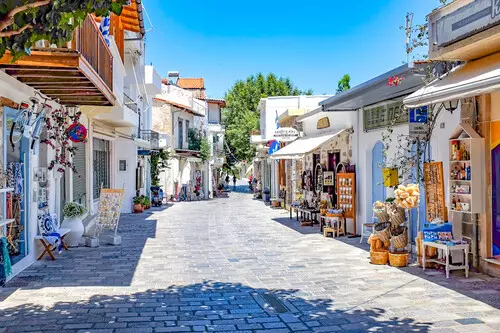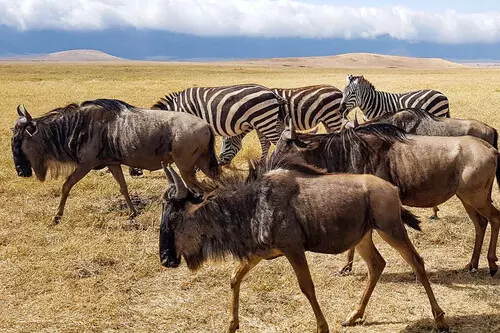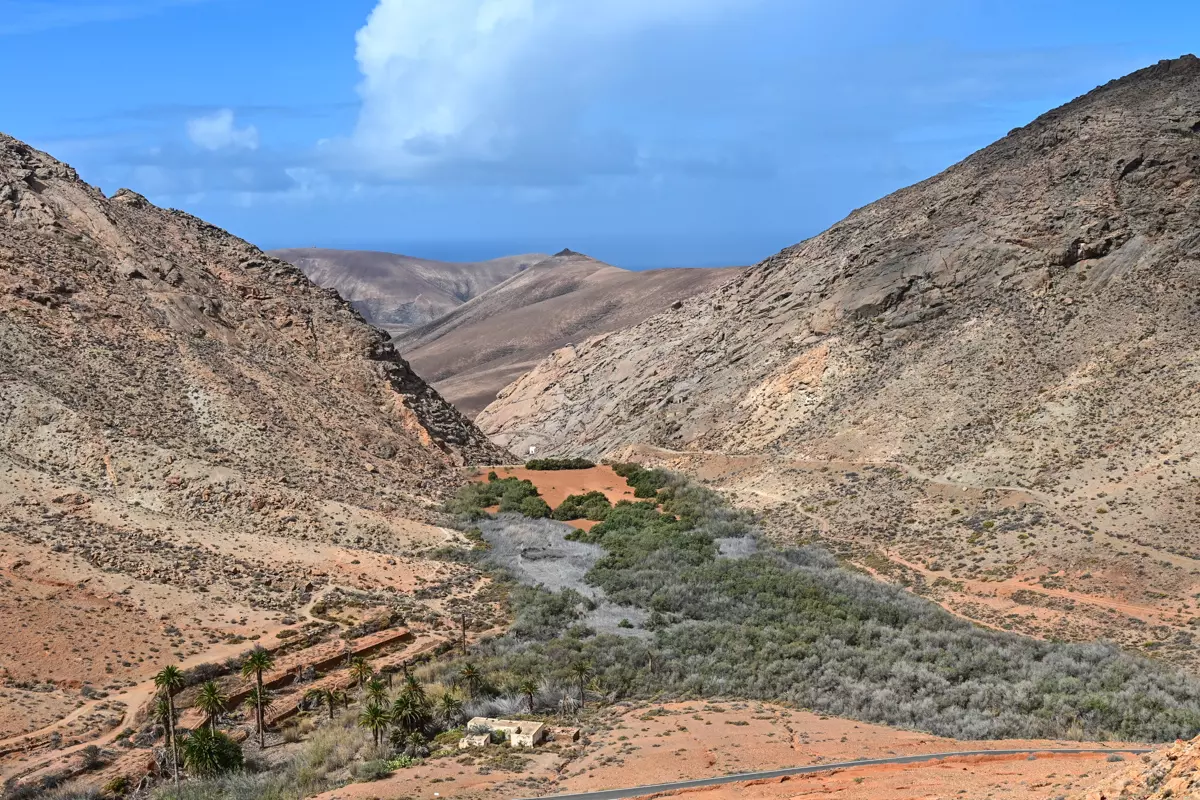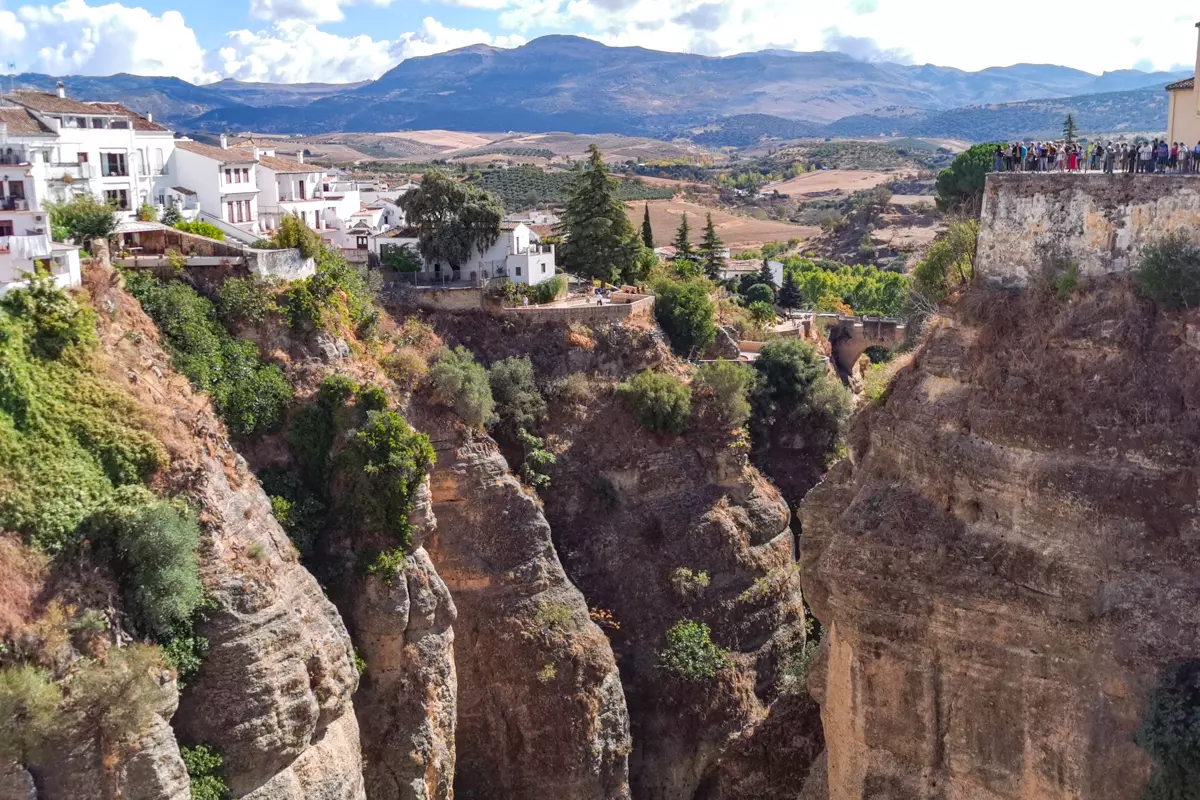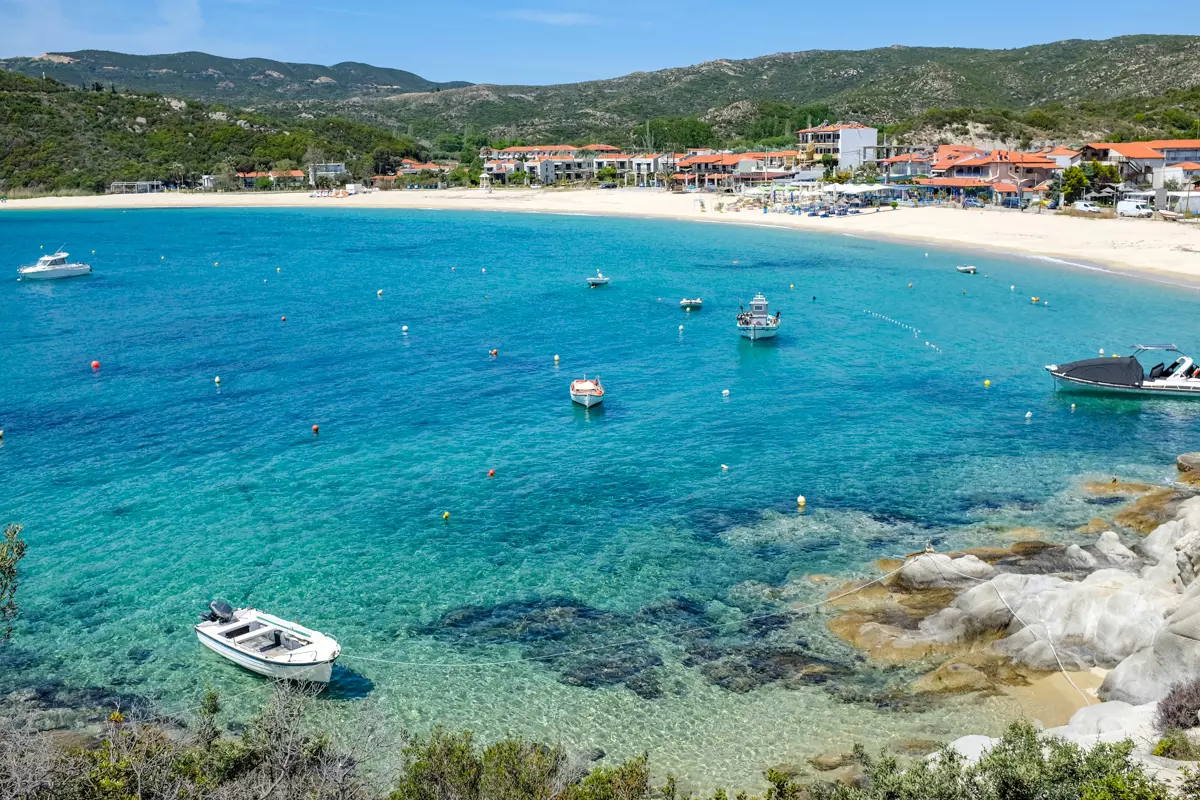Andalusia, Spain: 15 Best Things to Do and See
The Andalusia region is a gem in southern Spain, offering warm, vibrant, and enchanting holidays throughout the year. I was immediately mesmerized by how perfectly tradition blends with the modern world, and how the remarkable architecture set against breathtaking landscapes, creating a whirlwind of colors, musical rhythms, and cozy atmospheres.

Things to Do in Andalusia, Spain
Here, the sun’s rays gently kiss the well-maintained beaches, lazily flow down the mountains, and brush against distant vineyards and olive groves. In the cities, you can hear the rhythms of flamenco and experience the passionate Spanish temperament, while historic buildings quietly recount stories from the past. So, what are the best things to do in Andalusia, Spain? Read on below to find out!
Ronda

If you’re interested in Andalusia, you’ve likely seen photos of Ronda, with its impressive bridge spanning the gorge and the city located atop it. This is indeed Ronda, situated on either side of the El Tajo gorge and connected by the famous arched bridge built back in the 18th century.
In Andalusia, Ronda is one of the most famous and frequently visited destinations. Travelers gather here to admire the renowned New Bridge (Puente Nuevo) and the breathtaking views it offers. Yet, Ronda has much more to offer to its visitors: explore the Almocabar Gate, a Moorish architectural masterpiece from the 13th century that surrounds the old part of the city. Soccoro Square (Plaza del Socorro), a popular square among locals, is also worth a visit. Another place to see in Ronda is Plaza de Toros, a bullring built in 1785. If you want to learn more about bullfighting, which is a unique part of Spanish culture, I highly recommend taking a guided tour.
Accommodation: Here are all your hotel options in Ronda.
Malaga

Malaga is a popular resort in southern Spain that appeals to both lovers of beaches and those seeking to expand their knowledge. It offers a variety of interesting, stunning, and exclusive experiences. One of its most notable landmarks is the Cathedral of Malaga, a masterpiece that took several centuries to finish. This long construction period is reflected in the blend of Gothic, Renaissance, and Baroque architectural styles that adorn the building. The city is vibrant and full of life, offering plenty of things to see and do.
Even if you don’t want to spend all your time relaxing on its stunning beaches, you’ll find something exciting to explore. Consider visiting the Alcazaba fortress, which is over a thousand years old, and the 14th-century Gibralfaro Castle, known for its defensive purpose. Art lovers will find the Picasso Museum, which is dedicated to the famous artist born in Malaga. The Botanic Gardens of Malaga, which are 23 hectares, and the historic Malaga bullring are also well worth a visit.
Marbella

Marbella, often called the resort of the wealthy, attracts visitors eager to see what makes it so special and appealing to luxury lovers. Everything in this seaside resort is of the highest standard: the most expensive hotels, prestigious shops, casinos, golf courses, nightclubs, restaurants, and bars. Further from the resort’s center is Puerto Banus, where the yachts of the wealthy are moored.
In striking contrast to this luxury is the picturesque and welcoming old town of Marbella. It is characterized by its white houses, narrow streets, colorful flowers, and friendly locals, which I liked very much.
Discover: Sunset Sailing Trip with Drinks and Snacks.
Seville

Seville is unique and one of the most beautiful cities, not only in Andalusia but also in all of Spain. Here, the vibrant rhythms of flamenco, the passionate Spanish temperament, delicious cuisine, and vivid colors come to life! Be sure to visit local restaurants to savor traditional Spanish dishes. To explore the city, take a Hop-on Hop-off bus tour.
In Seville, you can visit one of the largest cathedrals in the world and the stunning Alcazar Gardens, which I recommend dedicating at least half a day to fully explore. The Moorish-style palace is very impressive, but the surrounding garden, filled with lush greenery, is equally remarkable. Take a walk around Spain Square, where you’ll find nearly a dozen colorful ceramic-tiled benches that leave a striking impression. The square also offers various activities, including boat rides and carriage tours.
You must not miss the unique landmark – the Metropol Parasol, also known as the “Seville Mushroom.” This wooden structure stands 26 meters high and spans about 150 meters wide. If you enjoy viewing cities from above, you can go up to the top of this remarkable structure. Seville also boasts other fascinating attractions, such as the beautiful Gothic cathedral, the bullfighting arena, the Tower of Gold, and many more interesting sights.
Accommodation: Here are all your hotel options in Seville.
Granada

Nestled among seven hills, Granada is one of Spain’s most beautiful and popular cities, offering a great time for anyone looking to satisfy their curiosity and expand their knowledge.
It is hardly possible to imagine a visit to Granada without sightseeing at the Alhambra Palace, which is included in the UNESCO list. I highly recommend booking tickets in advance. Also, be sure to visit the stunning Generalife Gardens, where fountains, roses, and orange groves create a romantic, fairy-tale setting.
The Cathedral of Granada is also worth travelers’ attention, admired for its Renaissance elements and breathtaking interior. While strolling through Granada, don’t miss the Palace of Charles V, the Nasrid Palaces, and the Saint Jerome Monastery. Families traveling with children should definitely add the Granada Science Park to the list of attractions.
Frigiliana
When traveling through Andalusia, you’ll encounter several so-called Pueblos Blancos, or “white villages.” As the name suggests, these villages are characterized by their white-colored houses, which give both aesthetic appeal and exceptional charm to the area. The vibrant, multi-colored flower blossoms that adorn these villages stand out beautifully against the white background.
Such a village of charming beauty is Frigiliana, set upon Costa del Sol in the province of Malaga. White-painted houses form a perfect background, not only for ceramic pots with colorful flowers, but also for bright blue doors, shutters, and balcony railings. This romantic combination of white and blue creates a charming atmosphere that’s perfect for travelers seeking picturesque shots. Narrow, stone-paved streets wind between the houses, inviting visitors to stroll, admire the unique decorations and architecture, and have a look at the work of local merchants.
Mijas Pueblo

Mijas Pueblo is another “white village” known for its traditional white architecture, narrow cobblestone streets, and breathtaking views of the Mediterranean Sea and the mountains. While walking around Mijas Pueblo, you will be enchanted by typical Andalusian white-painted houses. These houses are not only beautiful but also practical, as the white color helps keep them cool in the summer. The village is characterized by its narrow labyrinth of streets, where you can admire the charming houses and discover excellent dining spots. It’s also a great place to shop for souvenirs and observe the work of local artisans.
The cozy bustle and lively atmosphere of the town greet you in the small squares, where locals and tourists gather. These squares are perfect for spending an afternoon or evening, savoring Andalusian cuisine and enjoying locally produced wine.
Discover: Panoramic city tour with an electric Tuk Tuk.
Cordoba

The city’s history dates back to Roman times and includes periods of Muslim rule, which has left its mark on the local culture and architecture. Travelers are particularly captivated by Cordoba’s old town, a UNESCO World Heritage site, and the Great Mosque of Cordoba. Built by the Moors between 785 and 786, the mosque’s interior gracefully combines elements of Arabic and Byzantine styles. In the city, you can also see the Roman bridge with its 16 arches, now rebuilt, but the original structure dates back to the 1st century BC. I recommend setting aside time for the Alcazar, one of Cordoba’s most impressive sites. The palace, which features a blend of Moorish, Gothic, and Renaissance elements, along with its beautifully manicured gardens, is sure to captivate you.
The Hop-on Hop-off tour was incredibly convenient for exploring the city. It allowed me to comfortably and efficiently see the most interesting and popular attractions in Cordoba. Other attractions worth visiting include the Jewish Quarter and the Palace of Viana.
Caminito del Rey

Caminito del Rey is one of the most impressive places in Andalusia, visited by large numbers of travelers each year. This distinctive hike offers a thrilling experience as it winds through breathtaking landscapes at an altitude of around 100 meters, with some sections reaching up to 300 meters. What is more impressive is that the wooden path clings to the rock walls and it is quite narrow, about 1 meter, stretching across a gorge with a river flowing below. It goes without saying that the views are breathtaking, and the adrenaline rush is considerable as well.
Practical Information: tickets to Caminito del Rey should be purchased online here. If you plan to visit with children, note that the route is suitable for children aged 8 and older, but they must be accompanied by an adult. Additionally, the path is one-way only, so returning along the same route is not possible.
Tip: If tickets are sold out on the official website, you can try buying them through this link.
El Torcal de Antequera

I highly recommend this park to all nature lovers and those who appreciate stunning views, as it left a lasting impression on me. It’s believed that this area was once covered by a sea, and over time, natural processes have transformed it into a landscape of breathtaking rock formations that attract travelers from around the world. For a walk in the park, you can choose from a variety of hiking trails that differ in length and difficulty.
It is home to over a hundred species of animals, so there’s a good chance you’ll encounter some wildlife during your hike. You can easily spend half a day or more exploring the park, and it will be an enjoyable experience for both adults and children.
Discover: El Torcal de Antequera tour with local guide.
Bioparc Fuengirola

Don’t be misled by the park’s relatively small size, as the variety of animals living here is impressive. The best part is that all the animals are housed in excellent conditions designed to mimic their natural habitats, incorporating elements like rivers, rocks, and vegetation.
In this park, visitors can see a wide range of animals, including Galapagos tortoises, orangutans, gorillas, and chimpanzees. You’ll also find pygmy hippos, Madagascar lemurs, Malaysian tapirs, and many others from around the world. There is a place to eat in the park, and if you are traveling with children, there’s a playground where they can have fun.
Garganta Verde Canyon

The Garganta Verde canyon is renowned not only for its stunning landscapes and fabulous vegetation but also for being home to the largest vulture colony in Europe.
The canyon offers several hiking trails, and I highly recommend trying at least one that suits your ability, after all, it’s not every day you get to hike through a canyon, right? It’s a truly remarkable feeling and an unforgettable experience. While hiking, you’ll have many chances to spot the famous vultures up close, unlike most travelers who only see them from designated viewpoints.
Please note: from June 1 to October 15, during the summer season, some or all of the hiking trails may be closed due to the risk of forest fires. A permit is also required for hikes in Garganta Verde, and you can submit the application via this link.
Also read: Best Things to Do in Ronda City
Juzcar

Juzcar is often referred to as Smurf village. So why this particular name is given? It earned its nickname because the village’s houses were painted blue for the filming of a Smurfs movie. This unique feature made the village famous and continues to attract many curious visitors. After the film, the village decided to keep its vibrant blue charm and has developed its tourism infrastructure to welcome not just Smurf enthusiasts but other curious visitors as well.
For families with children, a fun activity is hunting for statues and portraits of the beloved Smurfs hidden throughout the village. For those who like active rest, the area offers opportunities for hiking, cycling, and simply enjoying nature as the village is surrounded by stunning landscapes.
Medina Azahara

Medina Azahara is an ancient Moorish city in Andalusia and the largest archaeological site in Spain. Walking through the ruins feels like traveling back in time to when the city flourished.
The city was once built on terraces along a hillside, with each terrace separated by walls, effectively dividing the city into several distinct parts. You can also visit a small museum here that exhibits items found in this area.
Accommodation: Here are all your hotel options in Andalusia.
Andalusia Tours & Activities
The vivid region of Andalusia in Spain draws tourists not just for its stunning sights but also because of the opportunity to try various entertainments. Here you can go diving, windsurfing, go on a mountain bike day trip, try Via Ferrata climbing or adrenaline-filled canyoning. I also recommend taking advantage of a unique opportunity – to look for dolphins along the Benalmadena coast on a catamaran. It’s one of the most memorable things you can do while you’re in Andalusia, Spain!
How To Get To Andalusia
Travelers from around the world typically fly into Malaga or Seville International Airports to reach Andalusia. Major Spanish airlines like Iberia, Air Europa, and Vueling offer extensive routes across Europe, Asia, and America, providing frequent flights to Andalusia. Additionally, major international carriers such as Lufthansa, Turkish Airlines, Etihad, and TAP Air Portugal flying to Malaga and Seville.
Andalusia is also home to four regional airports: Almeria, Cordoba, Granada, and Jerez (in the Cadiz province). These smaller airports are serviced by airlines such as Iberia, Vueling, and Ryanair.
Tip: if you’re traveling to Andalusia from cities like Barcelona or Madrid, consider taking advantage of the high-speed trains, which provide a convenient and fast way to reach key destinations such as Seville, Malaga, and Cordoba.
Climate In Andalusia, Spain
Andalusia has a great Mediterranean climate, with mild winters and hot, dry summers. The region gets over 300 sunny days a year, so rain is quite rare. Interestingly, in winter, you can find snow in the Sierra de las Nieves and Sierra Nevada mountains. However, if you head down to the coast, you can still enjoy sunny beach weather.
In summer, even for the biggest heat enthusiasts, traveling deeper into Andalusia and visiting cities like Córdoba or Seville can become a real challenge. During this time, temperatures in the region can reach up to 40 degrees Celsius. A record-breaking temperature of 47.6°C was recorded in August 2021 in La Rambla, a town in the province of Cordoba!
The hottest months in Andalusia are July and August, with average temperatures around 29°C while January is the coolest month, with an average of 11°C. Most rainfall occurs between December to March period across this region.
Average Temperature
°C
Places To Stay In Andalusia
Andalusia is my favorite region in Spain, and I have visited it several times. When looking for accommodation, you will find a variety of options here, ranging from simple guesthouses to luxurious hotels and villas. With so many choices, you’re sure to find the best place to stay for your visit.
Many beach hotels in Andalusia are perfect not only for relaxation but also for entertainment. You’ll find swimming pools, spas, gyms, massage parlors, saunas, restaurants, and plenty of other activities. The best thing about staying in these places is that everything you need is just there. Keep in mind, though, that the closer the hotel is to the beach, the more expensive it tends to be. More budget-friendly options are usually a bit farther from the sea or the city center. I’ve listed some hotels in Andalusia below, so hopefully, you’ll find the perfect place to stay.
Hotels In Malaga Province
- Hotel Malaga Vibes: located further from the center of Malaga, but close to the metro station, making it easy to reach the main attractions quickly.
- Casa Consistorial: a 4-star hotel in the old town of the Fuengirola resort. This hotel is housed in a 19th-century building and is highly rated by guests.
- METT Hotel & Beach Resort Marbella Estepona: an exclusive, multi-service recreation complex located by a sandy beach.
Seville Hotel Choices
- Petit Palace Puerta de Triana: a 3-star hotel just a 10-minute walk from Seville Cathedral.
- Hesperia Sevilla: a 4-star hotel located a bit farther from Seville’s city center, but highly rated by guests.
- Vincci Selección Unuk 5 GL: luxurious hotel offering a swimming pool and spa services, located near Seville’s city center.
Accommodation In Cordoba
- Don Paula: an economy-class hotel in a great location, just a few hundred meters from the old town of Cordoba.
- Exe Ciudad de Córdoba: a 4-star hotel situated in a quieter area of the city, about a 20-minute walk from the old town.
- The Luxury 5* Hospes Palacio del Bailio, a Member of Design Hotels, is housed in a 16th-century palace, right in the city center of Cordoba.
Hotels In Granada
- Las Nieves: an economy-class hotel located in the very old town of Granada.
- Hotel Granada by Pierre & Vacances: a well-rated 4-star hotel situated a bit farther from Granada’s city center.
- Alhambra Palace Hotel: a luxurious 5-star hotel located within the Alhambra complex, right next to the main entrance to the palace.
Getting Around Andalusia, Spain
Andalusia has a well-developed public transport system. However, if you prefer more comfort, I recommend renting a car. Below, I’ve listed some of the best ways to explore this fascinating region that has captivated me.
By Bus
Many bus companies operate in Andalusia, making it one of the most convenient options for traveling around this Spain region. Buses are ideal for reaching towns and villages that aren’t accessible by train, and they also connect major cities. Although buses are often cheaper than high-speed trains, the journey takes longer though.
Practical Information: ALSA is the largest bus company in Andalusia. Tickets can be bought at station offices or online.
By Train In Andalusia, Spain
Trains are one of the most environmentally friendly ways to travel. They allow you to relax and enjoy the views outside the window while reaching Andalusia’s major cities and towns.
The Spanish railway network, operated by the state-owned RENFE, is known for its quality, comfort, and punctuality. Tickets can be purchased at station ticket offices, ticket machines, or online up to 60 days before your travel date.
Tip: I recommend buying train tickets online in advance, especially during public holidays or long weekends.
By Rented Car
For greater independence from public transport schedules and comfort while exploring Andalusia, renting a car is a great option. With a rental car, you can stop to enjoy scenic views or visit more remote places.
Car rental services are available at all major airports and larger resort towns in Andalusia. If you’re traveling during peak season, it’s a good idea to book your car in advance. I mostly use Discover Cars because they offer one of the lowest prices on the market and have full coverage insurance.
Faqs About Things To Do In Andalusia, Spain
Andalusia is Spain’s second-largest region (out of 17), even bigger than Belgium, the Netherlands, and Switzerland in area. To really explore and enjoy the main attractions, I’d suggest spending 9 to 11 days here.
The best times to visit Andalusia are from March to June or from September to November. During these months, the weather is cooler than the summer heat, hotel prices are more reasonable, and there are fewer tourists around.
If you plan to explore Andalusia extensively and see as much as possible, renting a car is the way to go. But if you prefer a more relaxed pace, you can avoid the car rental and rely on Andalusia’s excellent public transport.
Seville is the most popular city in Andalusia, attracting over a million international tourists each year.
Yes, Andalusia is not only safe but also a fantastic spot for a relaxed holiday with children. Many seaside hotels and resorts in the region offer kids’ clubs, animator teams, or playrooms where the little ones will be entertained and supervised.
While you’re in Andalusia, be sure to try some delicious Spanish dishes. These include Paella Alicante (with chicken and shellfish), Arroz a la banda (rice dish), and Esmorzaret Alacanti (seafood). Don’t miss out on Fondillón, a traditional sweet wine that pairs perfectly with local dishes and fresh, locally picked fruit.
With sunshine almost year-round, Andalusia has a pleasant climate. Here, you can enjoy hiking trails, relax on beautiful beaches, explore unique city architecture, and savor delicious local dishes. These are just a few of the top reasons to visit Andalusia, Spain.
Book your flight
For the best flight deals, I always rely on Skyscanner. Features like Multi-city and Explore Everywhere help me uncover incredible travel opportunities.
Rent a car
Discovercars is my top choice for comparing car rental prices for any road trip around the world. The booking experience is always smooth and easy.
Travel insurance
SafetyWing provides affordable travel medical insurance with global coverage, perfect for digital nomads and long-term travelers.
Book Tours & Attractions
Experiencing a destination to the fullest is easier with a well-planned itinerary. I use GetYourGuide for guided tours and Tiqets for quick access to museum and amusement park tickets.
Protect yourself online by VPN
No matter where I go, I always use NordVPN for secure browsing and to ensure I can access websites that might be blocked in certain countries.
Disclosure: I only suggest companies that I personally rely on. If you use the affiliate links in my posts to book services, I’ll earn a small commission, with no extra cost to you.
Here it is – the best things to do in Andalusia. What’s your favorite thing to do in this stunning region?
Share on

A title
Image Box text
Evelina
Hi, I’m Evelina, a travel enthusiast who loves nature, peace, and authentic places. I cherish the freedom to explore and learn with each adventure, whether it’s hiking trails, stunning beaches, natural parks, unique architecture, or rich cultural heritage. I hope my experiences inspire you to embark on your own journeys!
